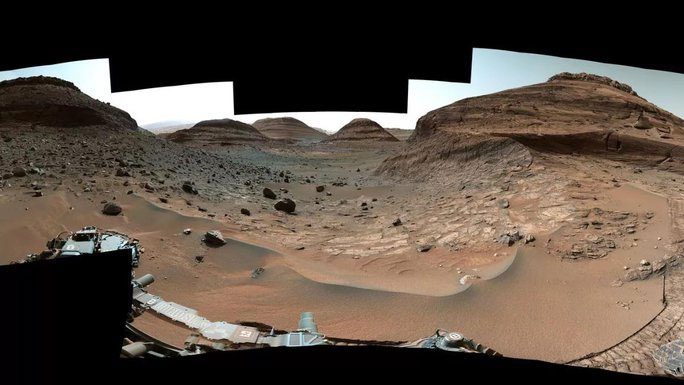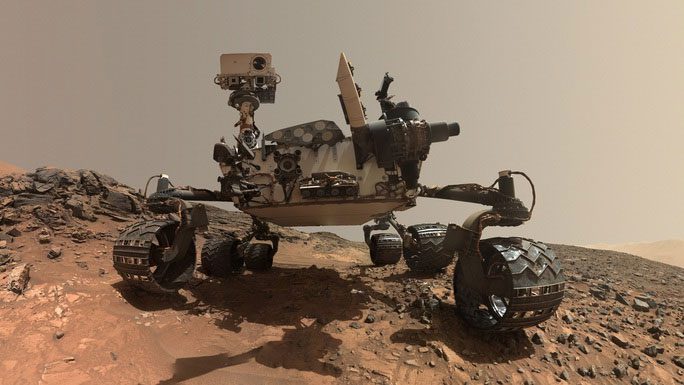The interplanetary images returning to Earth reveal a vast field of sand resembling our own planet, with NASA disclosing that it once harbored streams and ponds filled with water.
According to Space, the newly released images accompany NASA’s announcement that their “immortal” warrior – Curiosity – has reached an area believed to have formed billions of years ago, retaining its pristine state just before water disappeared from Mars.
This is the Sharp Mountain region, where preliminary survey data indicates a rich presence of salty minerals that scientists believe were left behind by the final streams and ponds that once existed on the red planet.

A panoramic image composed of multiple shots from different angles, showcasing the Sharp Mountain region on Mars – (Photo: NASA)
Thus, this land may hold incredible clues about how Mars’ climate changed from a state similar to Earth to the barren, cold desert it is today.
The abundant salty minerals in the area were first discovered by NASA’s Mars Reconnaissance Orbiter (MRO) in 2012, but after a long and unexpected journey, the ground warrior Curiosity has finally arrived.
This journey was also an unexpected adventure, as Curiosity, a robotic rover, was supposed to have completed its mission several years ago. However, this solar-powered warrior continues to “live on” despite periods of inactivity during global dust storms on Mars. Consequently, NASA decided to chart new paths for it.
According to NASA, the direct data that Curiosity has sent back from the Sharp Mountain region shows a variety of interesting rock types and clear signs of water in the past, including popcorn-like textured outcrops and salty minerals such as magnesium sulfate, calcium sulfate, and sodium chloride (table salt).

The extraterrestrial life-seeking warrior Curiosity – (Photo: NASA)
Curiosity has selected a rock nicknamed “Canaima” to drill and collect its 36th Martian sample.
Project Director Kathya Zamora-Garcia stated that the mission was successful and the rock did not damage Curiosity’s drill bit as previously feared. They are currently analyzing the samples using a remotely operated “mini-laboratory” equipped on this exploratory robot.
Curiosity spent the entire month of August traversing a narrow and treacherous path known as Paraitepuy Pass to reach this area, overcoming concerns of getting “bogged down” in excessively thick sand and navigating steep terrain and hills that could hinder its communication with Earth and the MRO.
The places that this first NASA rover has rolled into all show signs of ancient rivers and ponds, as its primary mission is to search for evidence of extraterrestrial life that NASA is nearly certain once existed and then went extinct.
The Sharp Mountain region has long been of interest because, with evidence of the last rivers and streams, it could be the final refuge for Martian life before the planet became a desert, cooled down, and led to the extinction of all life.


















































